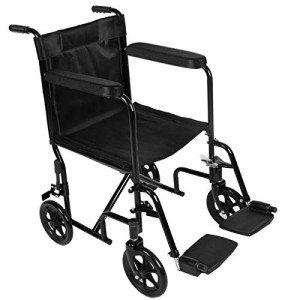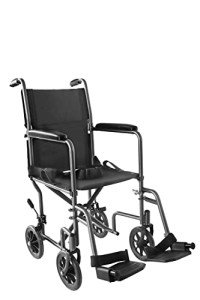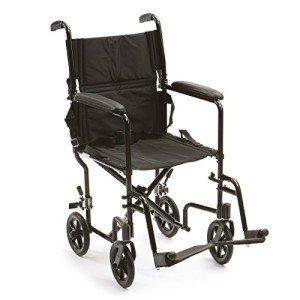In an era where accessibility and mobility are paramount, the introduction of lightweight folding self-propelled wheelchairs with commodes has revolutionized the way individuals with limited mobility approach daily life. This guide delves into the features, advantages, considerations, and FAQs regarding these innovative tools designed to enhance comfort and independence.
Understanding Lightweight Folding Self-Propelled Wheelchairs with Commodes
A lightweight folding self-propelled wheelchair with a commode combines the features of a conventional wheelchair with the added benefit of an integrated toilet seat. These wheelchairs are designed for individuals who can maneuver themselves without assistance but may need help with restroom access due to mobility challenges.
Key Features
-
Lightweight Materials: Made from specialized metals and composites, these wheelchairs minimize the physical strain of transport and maneuverability.
-
Folding Design: The ability to fold the wheelchair makes it compact, facilitating ease of storage and transport, whether in a vehicle or at home.
-
Self-Propulsion: Users can navigate independently, giving them control over their mobility without relying on caregivers or assistants.
-
Commode Integration: The built-in commode simplifies the process of using the restroom, making it more accessible and reducing the need for additional equipment.
-
Adjustable Features: Many models come with adjustable armrests, footrests, and seat heights, allowing customization to fit individual needs.
-
Safety Features: Most lightweight wheelchairs include features such as anti-tippers, reclining backrests, and easy-to-use brakes, ensuring user safety and comfort.
Advantages of Using a Lightweight Folding Self-Propelled Wheelchair with Commode
The decision to use a lightweight folding wheelchair with a commode presents various benefits that enhance user experience. Some of these advantages include:
Increased Independence
With self-propelled capabilities, users can navigate their environment independently, significantly improving their autonomy in daily activities.
Convenience
The integrated commode feature eliminates the need to transfer to another chair or device, making restroom access easier and more discreet, especially in public spaces.
Portability
The lightweight and foldable design allows for easy transport and storage, making it ideal for individuals who frequently travel or need to store their wheelchair when not in use.
Enhanced Comfort
Many modern designs focus on user comfort, offering padded seating and ergonomic designs to accommodate various body types and needs.
Versatility
These wheelchairs can be used both indoors and outdoors, making them a versatile option for a wide range of settings, from homes to parks.
Considerations When Choosing the Right Wheelchair
While the advantages are considerable, selecting the right lightweight folding self-propelled wheelchair with a commode requires thoughtful consideration. Here are some factors to keep in mind:
User’s Body Dimensions
- Weight Capacity: Ensure the wheelchair can support the user’s weight.
- Seat Width and Depth: Should accommodate the user comfortably.
Mobility Needs
- Propulsion Method: Consider if the user prefers self-propulsion or assistance.
- Terrain Adaptability: Some models are designed for smooth indoor surfaces, while others can handle outdoor terrains.
Features and Customization
- Adjustable Components: Look for customizable elements that can be modified as the user's needs change.
- Safety Features: Prioritize wheelchairs that come equipped with user-friendly safety features.
Budget
- Cost: Evaluate the options available within the budget, while still considering quality and necessary features.
- Additional Costs: Factor in any additional accessories or maintenance costs.
FAQs
Q1: What is the average weight of a lightweight folding self-propelled wheelchair with a commode?
A1: Typically, these wheelchairs weigh between 30 to 50 pounds, making them easier to handle compared to traditional wheelchairs.
Q2: Can these wheelchairs be used outdoors?
A2: Yes, many models are designed to be versatile enough for both indoor and outdoor use. However, it’s essential to consider the specific model's capabilities regarding terrain adaptability.
Q3: How do you clean and maintain a wheelchair with an integrated commode?
A3: Regular cleaning involves wiping down the frame, seat, and removable commode bucket with disinfectant. Additionally, checking the brakes and wheels for wear is vital for maintaining safety and functionality.
Q4: Is additional training required to use a self-propelled wheelchair?
A4: While basic operation is intuitive, users may benefit from some training or practice to increase comfort with self-propulsion and maneuvering in different environments.
Q5: Are there any alternatives to self-propelled wheelchairs with commodes?
A5: Yes, alternatives include powered wheelchairs, manual wheelchairs without commodes, or portable commode chairs, depending on the user’s specific needs and capabilities.
The lightweight folding self-propelled wheelchair with commode represents a substantial advancement in mobility aids, marrying convenience with independence. While selecting the right model requires careful consideration of various factors, the ultimate goal remains the same: empowering individuals with limited mobility to lead fulfilling and independent lives. With ongoing innovations in design and technology, the future of mobility solutions looks promising, enhancing the quality of life for many users worldwide.






